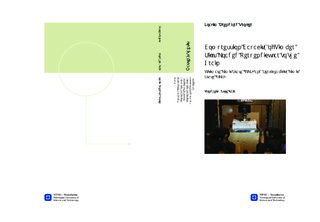Compression Capacity of Timber Sills Loaded Perpendicular to the Grain: Ultimate Limit State (ULS) and Serviceability Limit State (SLS)
Master thesis
Permanent lenke
http://hdl.handle.net/11250/228239Utgivelsesdato
2014Metadata
Vis full innførselSamlinger
Sammendrag
The purpose of this thesis is to derive a new model to calculate the compression capacity of timber loaded perpendicular to the grain in Ultimate Limit State (ULS). The different parameters included in the capacity formulas, are found by various compression test conducted at the Department of Structural Engineering (KT) during the spring of 2014. Some of the parameters have been determined directly from data collected from the compression machine, while others required the usage of optical measuring techniques. It was derived two different models for calculating the compression capacity perpendicular to the grain in this thesis. The first model is based on the strain field generated in the wood, and the second on the total energy required to reach a defined fracture criterion.The two models give some variation in the carrying capacity, compared to the values calculated with the current regulations in Eurocode 5 part 1-1. For smaller loading lengths the current regulations gives a capacity that is quite high, compared to the new models derived in this thesis. This is because the current model has rules that allows the applied load to be distributed over an effective area, which can lead to a carrying surface that is twice the size of the actual loading surface. When the loading length are getting larger, the new models will stabilize towards values of the capacity that is similar or larger to the ones found with the current regulations. It has also been derived a model for calculating in Serviceability Limit State (SLS), which provides the opportunity to determine the desired deformations in a connection based on own preferences.
